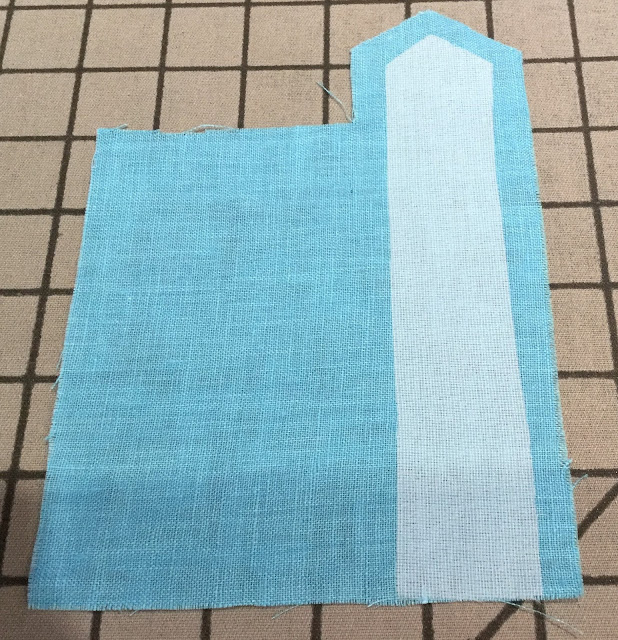Hi to all you sewers out there,
Today we'll start a new project. Louise has always loved the cute top in the Anything But Ordinary pattern. One day she had a stroke of genius and created a new interpretation of it. It's looser, more casual and comfy, and easy to make and wear. She named it her "Go-To Top".
Today, I'll show you the pattern changes needed, so you can make your own Go-To Top. It's a terrific top for our new at-home days, allowing us to be at ease but looking good.
I began by tracing my front and back pattern pieces. (That way, the originals are always available.) Add 2-3/4" to the hem edge so your top will be longer than the original. We'll also be adding a side vent.
Once you've traced the front pattern and added the hem, draw a line parallel to center front that begins about 1/3 of the way from the neck to the shoulder. Cut along that line and add 3/4" of tracing paper.
Now do the same with the back pattern piece. Overall, we're adding 3" to the total circumference (3/4" per quarter of the pattern). Louise also added an additional 1/2" of length at center back of the hem (over and above the 2-3/4" explained above). Use a fashion ruler to curve back up at the side seam.
Also ignore the red dot near the hem on the back pattern above. It's a mistake!! In the next blog, I'll show you how to sew the side vent.
You'll need to true the edges where you added the 3/4". Here's the hem edge:
And here's the shoulder edge.
And you need to lengthen the sleeve. Louise made hers a 3/4 length sleeve. A couple of things to think about--adding to the front and back moved the shoulder seam out. Measure your body from the neck, over the shoulder, around the elbow, to the place where you want your sleeve hem. Subtract an inch because the neckline finishes about an inch from your neck.
Now tape tracing paper to your sleeve (or trace the sleeve pattern and add paper). Measure across the front pattern shoulder seam (measure stitching line to stitching line.) Subtract from the body measurement you took. The remaining amount is how much to add to the short sleeve to make the 3/4 sleeve. Then add enough for a 2" hem. Like this:
You can taper the sleeve to your preference.
There's pretty fabric in the newsletter, so alter your pattern, choose a fabric, and get started. You can begin sewing your Go-To top pretty quickly. I'll give you some instructions for the side vents in the next blog, but here's one tip.
If you are making either an XS or SM size, stitch the seam attaching the neck facing to the garment with a 3/4" seam allowance rather than the standard 5/8". That will make the neckline a bit bigger, and you won't need the neck opening and tab that are in the original pattern.
So get started and I'll see you again in a few days with tips to finish your Go-To top.




























